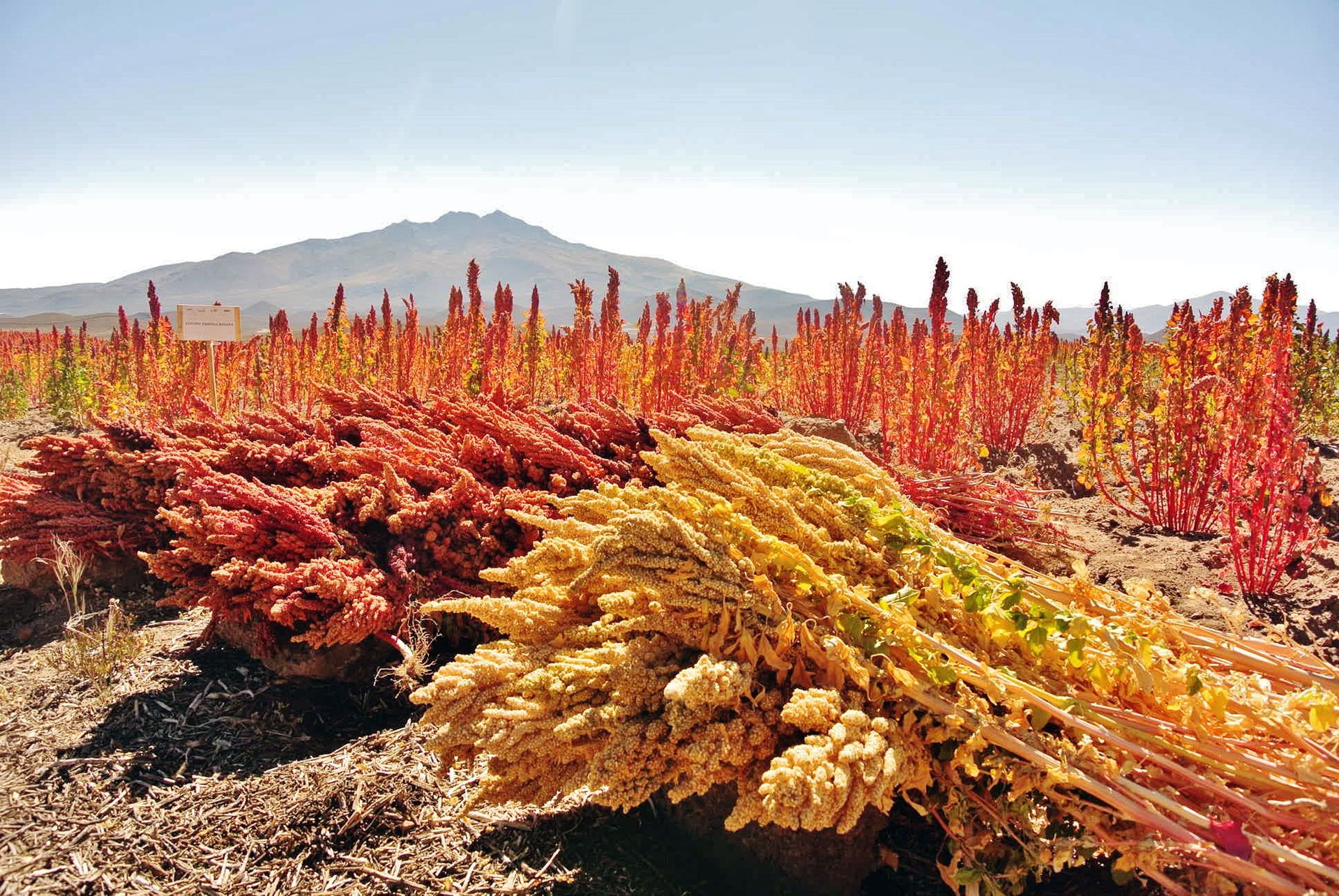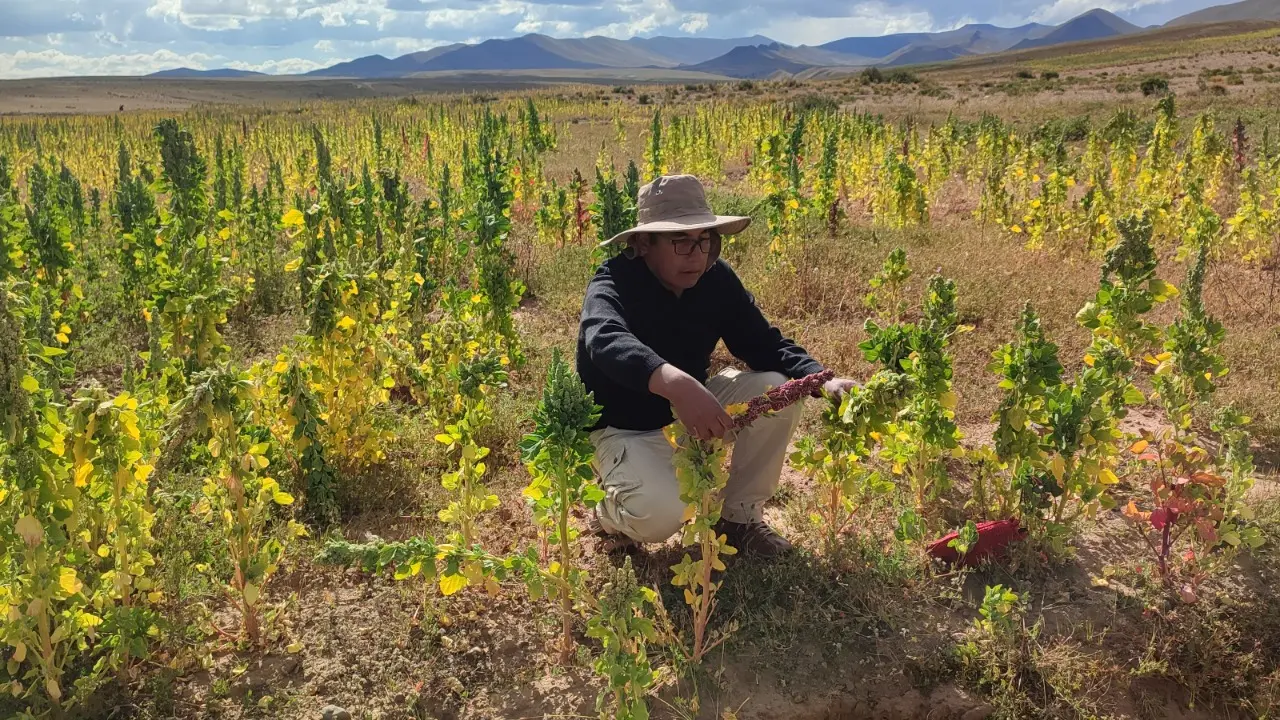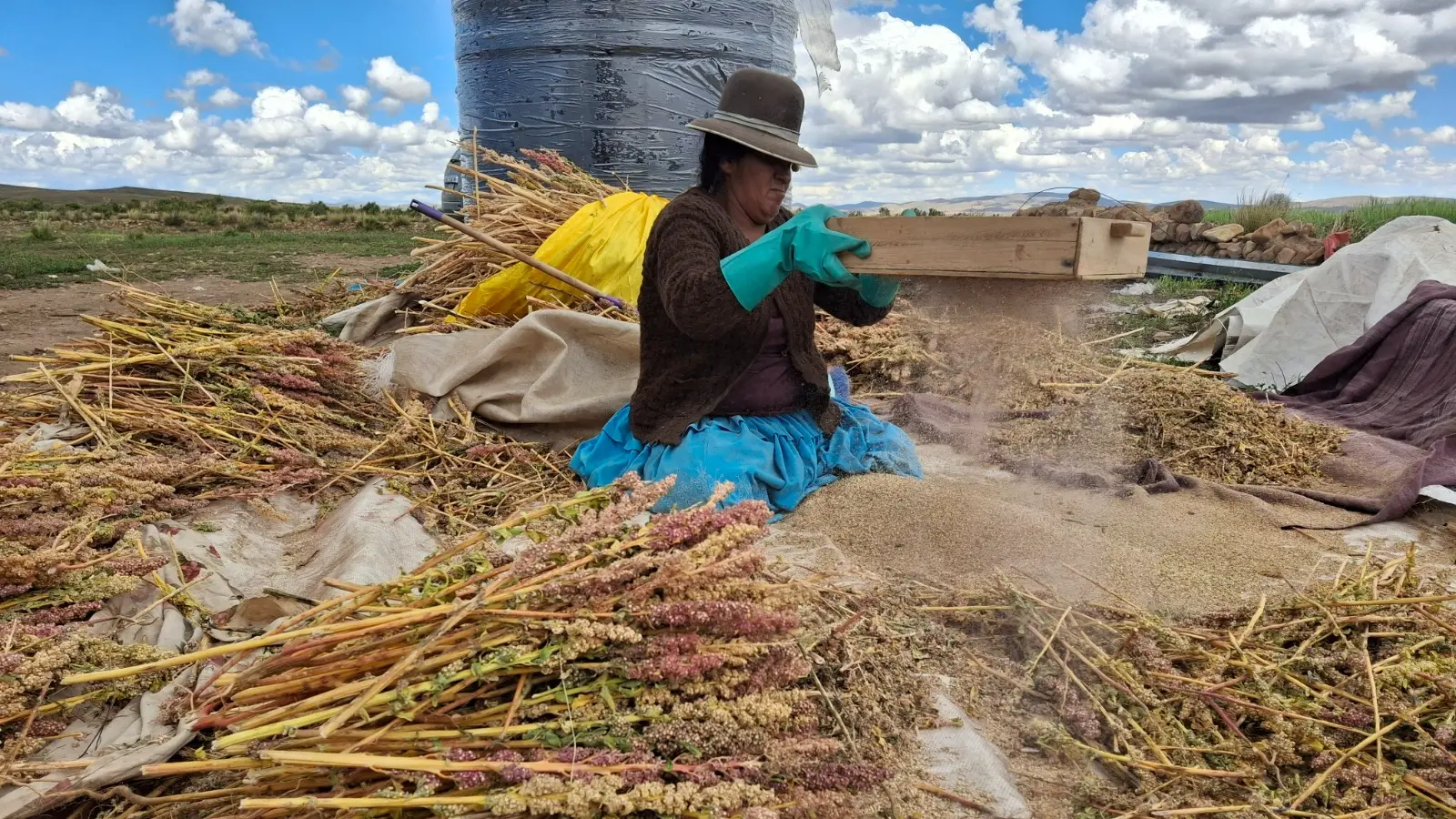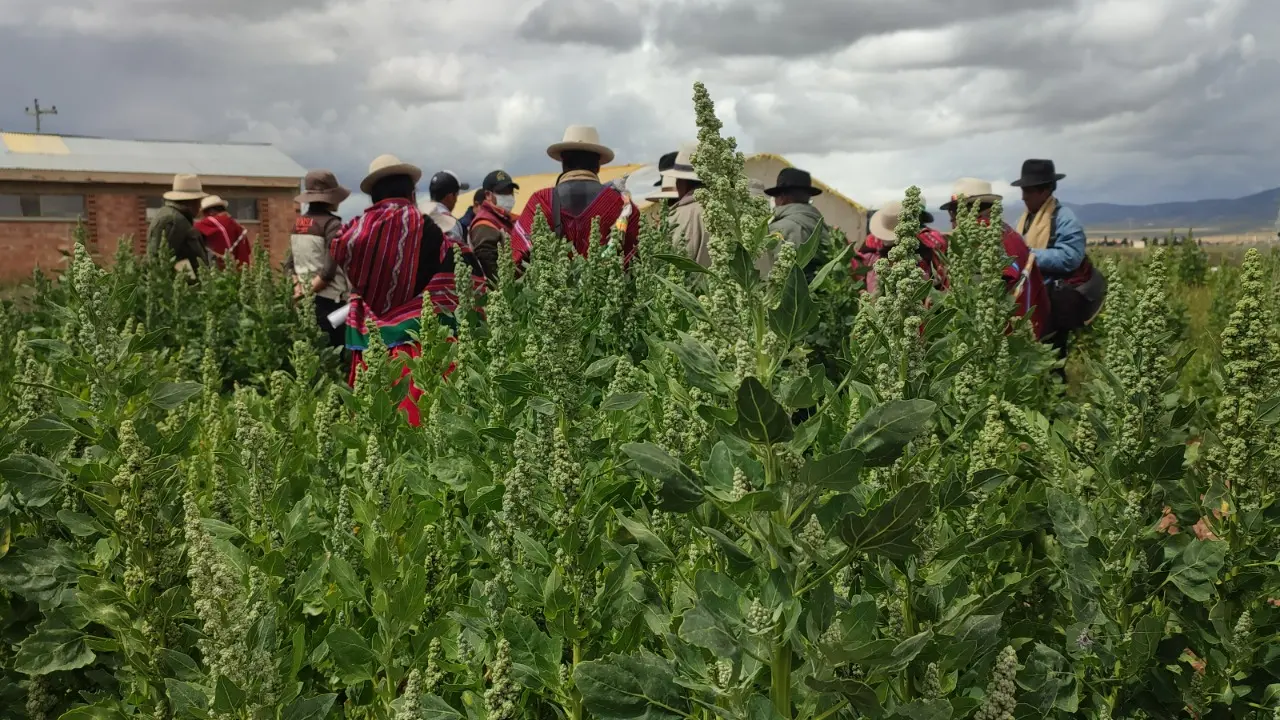Quinoa is the grain with the most nutrients as it contains all the essential amino acids, which are the molecules that serve as the fundamental building blocks of proteins. Therefore, it is considered a "superfood," according to the Food and Agriculture Organization of the United Nations (FAO)..
The researcher from the Institute of Agricultural and Natural Resources Research and the Patacamaya Experimental Station, which are part of the Faculty of Agronomy at UMSA, Marco Antonio Patiño Fernández, who works in the area of Andean grain transformation, comments that quinoa can have between 14 to 18 percent protein just as a grain, depending on the variety..
Research has revealed that fresh or dried quinoa leaves are gluten-free and provide an excellent source of proteins, amino acids, essential minerals, omega fatty acids, and low amounts of carbohydrates, and could address malnutrition issues and contribute to food and nutritional security..
Quinoa: a highly nutritious food
Quinoa is known as a food heritage for bringing together all the qualities of nutritional and nutraceutical value, that is, food-derived products with medical or health benefits. Currently, more than 100 countries are working with quinoa in production or research.
If we analyze the nutritional value of quinoa as biomass, that is, the set of organic matter of plant origin, Patiño explains, we can affirm that it has a high nutritional value and a wide range of proteins; for example, in quinoa leaves, there is between 20 to 25 percent protein value..
Protein value of quinoa leaves
SAccording to published research on quinoa leaves regarding their nutritional and phytochemical composition, as well as their benefits for human health, it is known that they contain more protein than the grain itself; furthermore, they are a source of other nutrients such as calcium, phosphorus, iron, and zinc.

The leaves can be consumed in soups.
In rural area communities, the quinoa leaf is known as chihua
UMSA promotes the added value of quinoa
Marco Patiño, who works in the area of Andean grain transformation at the Patacamaya Experimental Station, comments that currently quinoa is marketed only as a grain. UMSA is promoting added value directly for consumption, for example, by cleaning the grain to extract the saponin, which is the bitter outer layer. This allows for its commercialization as flakes after a process of lamination or pressure, which can be consumed at breakfast with yogurt, especially by children and young people, similar to granola or popcorn. With this variety of products, there are alternatives not only for different population groups but also for the preparation of known diets and menus, such as traditional dishes, among others: pesque prepared with butter, milk, cheese, anise, and of course quinoa, or phisara, which includes ingredients like potato, fava beans, cheese, beef broth, and quinoa. Both are considered excellent sources of complete protein, fiber, vitamins, and minerals, contributing to a balanced diet, digestive health, and cardiovascular health.
UMSA promotes the added value of quinoa
Marco Patiño, who works in the area of Andean grain transformation at the Patacamaya Experimental Station, comments that currently quinoa is marketed only as a grain. UMSA is promoting added value directly for consumption, for example, by cleaning the grain to extract the saponin, which is the bitter outer layer. This allows for its commercialization as flakes after a process of lamination or pressure, which can be consumed at breakfast with yogurt, especially by children and young people, similar to granola or popcorn. With this variety of products, there are alternatives not only for different population groups but also for the preparation of known diets and menus, such as traditional dishes, among others: pesque prepared with butter, milk, cheese, anise, and of course quinoa, or phisara, which includes ingredients like potato, fava beans, cheese, beef broth, and quinoa. Both are considered excellent sources of complete protein, fiber, vitamins, and minerals, contributing to a balanced diet, digestive health, and cardiovascular health.
Raising awareness of quinoa consumption through public policies and strategies
The researcher Marco Patiño comments that raising awareness in the population about quinoa consumption must be sustained and not just on quinoa day, based on public policies and strategies aimed at promoting responsible consumption and the habit of consumption due to its energetic, protein, and nutraceutical properties, as part of an agro-food culture, for example, in children's diets.
"It is important that we become more aware of our eating habits to address health issues such as obesity, diabetes, or cardiovascular diseases.".



